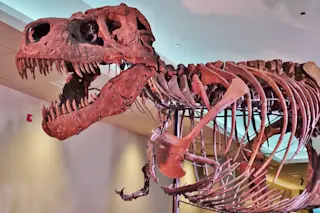There’s nothing small about Gigantopithecus blacki. The massive extinct animal likely rivaled a modern polar bear in size, weighing more than 1,000 pounds and standing nearly ten feet tall on its back legs.
The mystery around G. blacki is also super-sized. This largest of primates is known only from plentiful teeth and a few jawbones. For decades, speculation about its evolution loomed large.
But not anymore. Using a recently refined technique that’s already rewriting evolutionary relationships, researchers have been able to place Gigantopithecus, at long last, within our extended primate family tree.
While the finding is significant, what’s even more exciting is how the team arrived at this conclusion, and what it may mean for the study of evolution, including human origins.
Fragmentary G. blacki fossils, primarily from China, are 300,000-2 million years old. More than a thousand teeth have been found; from them, researchers have theorized that the animal ...














